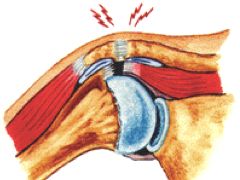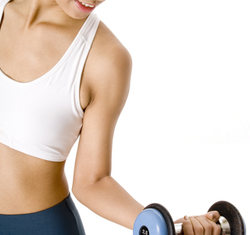 Given the stressful lifestyles most people lead nowadays, it is no wonder that many individuals want to have a healthy body that can withstand all the pressures and tensions that come their way. This is the reason why memberships in gyms or fitness centers remain on the rise and the demand for exercise videos continues to grow. Although following a healthy diet is commendable, this is not enough. Your diet must be combined with the appropriate exercise routines in order to have your desired optimum body.
Given the stressful lifestyles most people lead nowadays, it is no wonder that many individuals want to have a healthy body that can withstand all the pressures and tensions that come their way. This is the reason why memberships in gyms or fitness centers remain on the rise and the demand for exercise videos continues to grow. Although following a healthy diet is commendable, this is not enough. Your diet must be combined with the appropriate exercise routines in order to have your desired optimum body.Advertisement
Strength training is very important in order to achieve a healthy body. There are many benefits of this type of training; for starters it can boost your self-confidence. Knowing that you have a strong body makes you feel good about yourself. This feeling is likely to be reflected in your mood and confidence while going about your daily routine. This new-found confidence will be noticed by the people around you. Aside from developing stronger bones and enhancing your stamina, proper strength training will also ensure that you will get a good night's sleep every night. It likewise will minimize the possibility of getting injured or hurt since your body becomes more flexible.
When people decide to lose weight or get into shape, strength training is often overlooked. Most people will combine healthy eating with some cardiovascular training but leave out weight training. If you combine all three elements, weight training, healthy eating, and cardiovascular training, you will have a well-balanced exercise program that is guaranteed to bring you results.
Lifting weights can be intimidating for some people. It is easy to not know where to begin, or to be afraid of getting injured. Before proceeding, seek clearance from your doctor or a health professional. If you are ready to proceed, you have a choice between enrolling in a fitness center or hiring a personal trainer. Do not be afraid to ask for assistance; there are many fitness professionals who are eager to assist and teach you how to properly implement weight training into your fitness routine.
The hardest part of putting together a resistance program is knowing where to start. Cardiovascular training is pretty simple, you hop on a machine, push some buttons and you're off. You can also take a long walk, jog or hike; the point is, it doesn't require a lot of thought.
Weight training is a little different, you actually have to think about and design a workout program that fits you and your goals. There are a ton of workouts out there, but which one is going to be right for you? You may have questions about what exercises to do for which body parts. In the end, though, resistance training does not have to be complex, it can be as simple as relying on your own body weight for strength training by doing push-ups, leg squats, abdominal crunches and pull-ups. Remember, the most important step is to be committed to your routine and continue learning and challenging yourself.
# Andy Salazar is the owner of Empower Fitness in Visalia and a fitness consultant to the Getting Fit team at the Visalia Times-Delta.



 At first she thought she was feeling routine soreness, something that Donna Grubb-Hewlett was pretty sure she could muscle through. But when she heard a pop in the back of her leg during a February morning warm-up, she knew she had a more serious problem.
At first she thought she was feeling routine soreness, something that Donna Grubb-Hewlett was pretty sure she could muscle through. But when she heard a pop in the back of her leg during a February morning warm-up, she knew she had a more serious problem.

 For women looking to lose weight, get healthier or feel better about themselves -- both mentally and physically -- adding some weights to your workout routine may be the ticket.
For women looking to lose weight, get healthier or feel better about themselves -- both mentally and physically -- adding some weights to your workout routine may be the ticket. Is it better to start your workouts with cardio or weight training?
Is it better to start your workouts with cardio or weight training?



 One of the selling points of weight machines is that they’re safer than free weights. And it’s true — you’re in no danger of being crushed by a 100-pound barbell. The way that machines create a safer environment is that they put your body in the correct position and direct the movement pattern. Still, if you’re not careful, you can injure yourself.
One of the selling points of weight machines is that they’re safer than free weights. And it’s true — you’re in no danger of being crushed by a 100-pound barbell. The way that machines create a safer environment is that they put your body in the correct position and direct the movement pattern. Still, if you’re not careful, you can injure yourself.
 You can lift weights on consecutive days — just don’t exercise the same muscle two days in a row. Forty-eight hours is usually the ideal waiting period before exercising the same muscle group again. Lifting weights tears apart your muscle cells. Your muscles need a day to rest and repair so they come back even stronger.
You can lift weights on consecutive days — just don’t exercise the same muscle two days in a row. Forty-eight hours is usually the ideal waiting period before exercising the same muscle group again. Lifting weights tears apart your muscle cells. Your muscles need a day to rest and repair so they come back even stronger.


